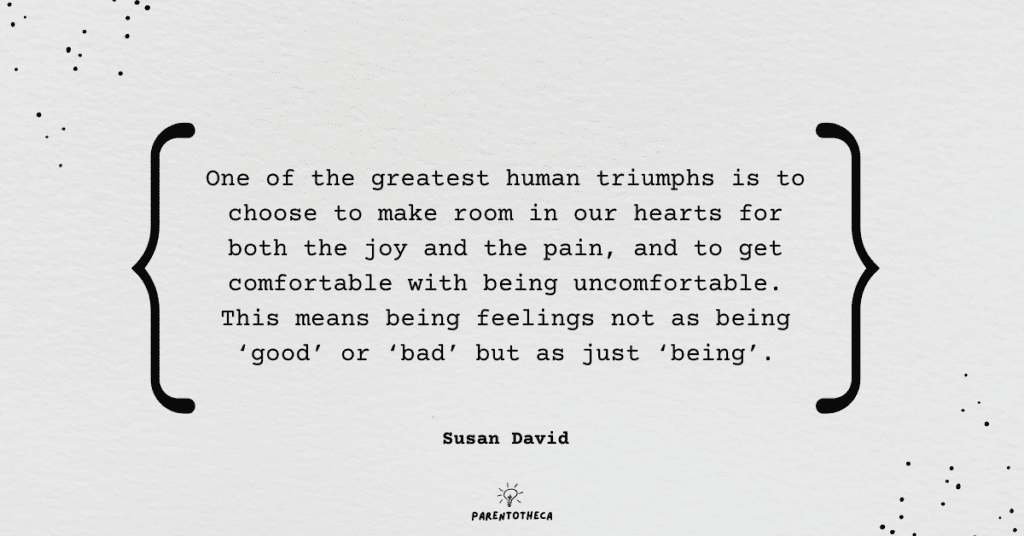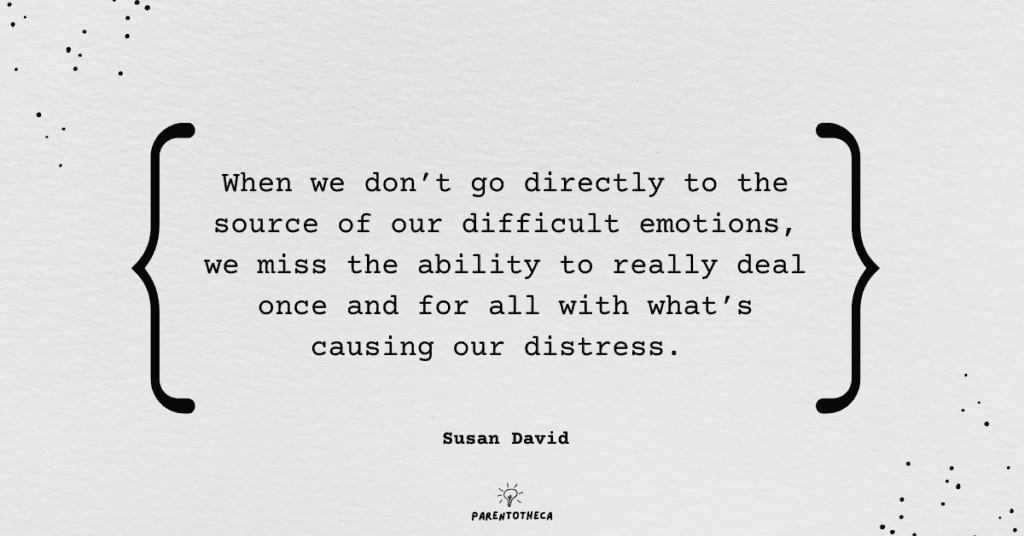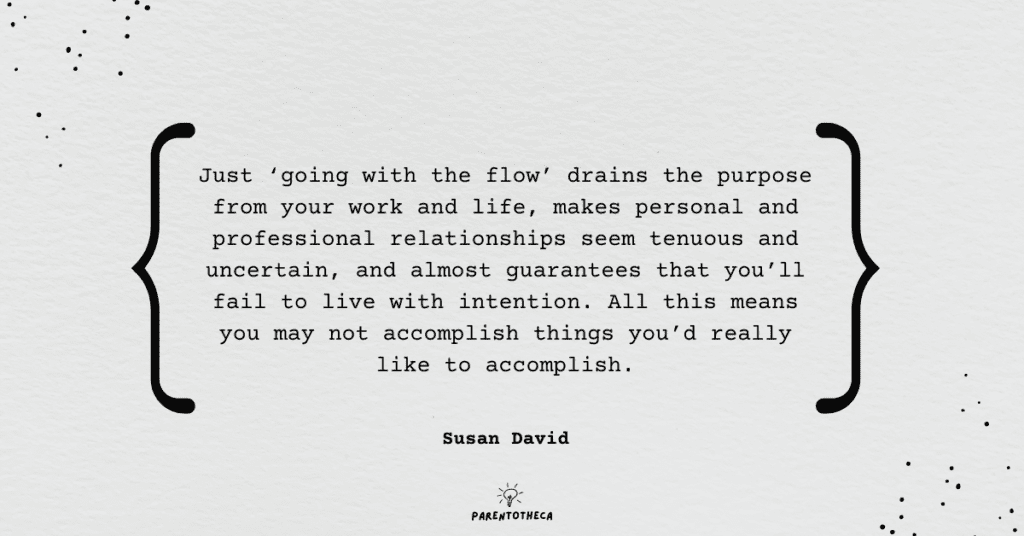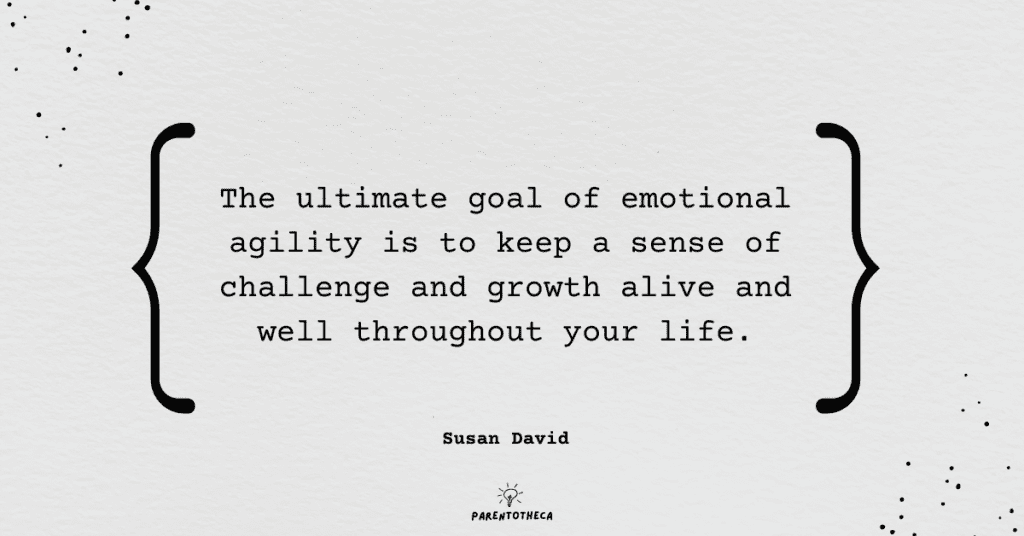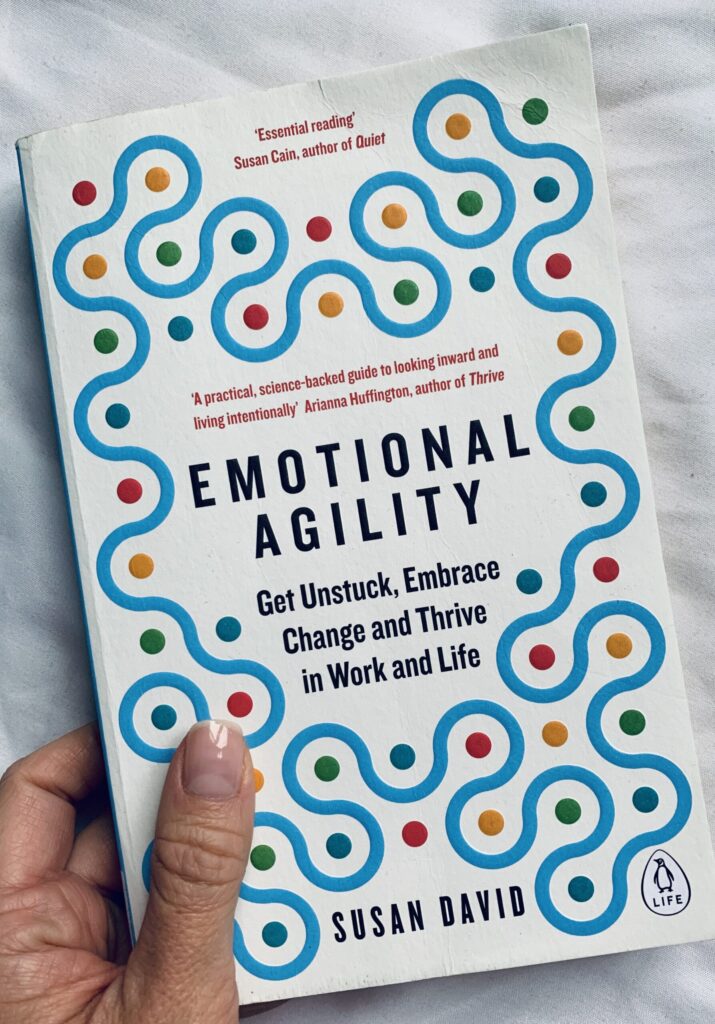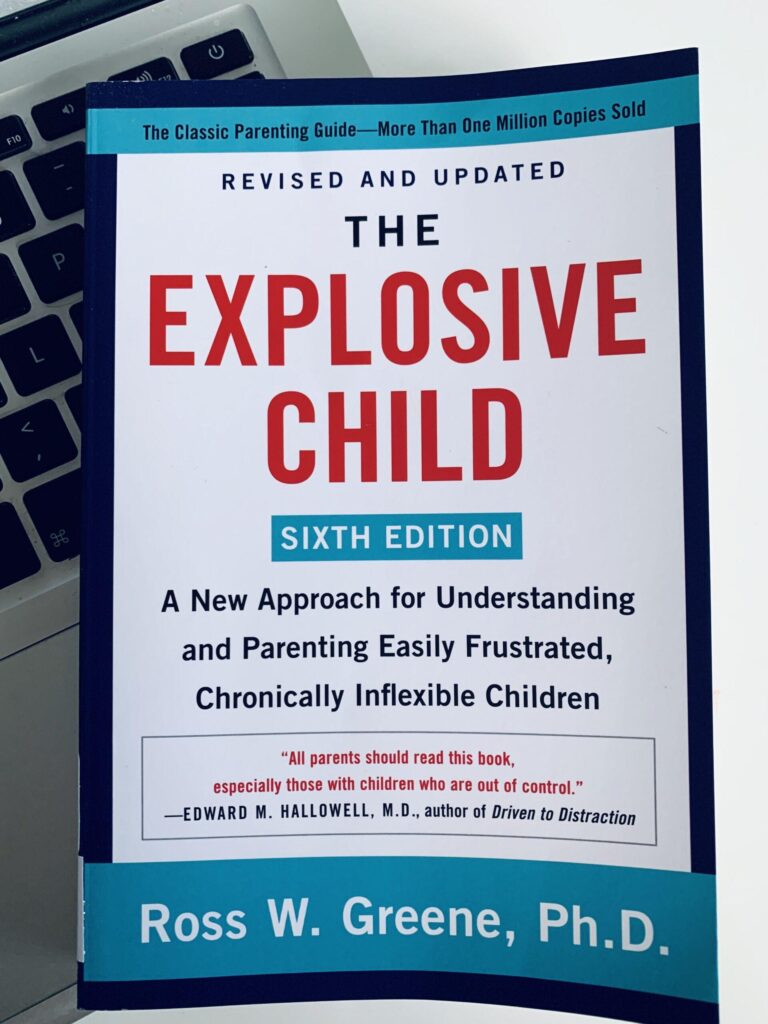 Emotional Agility
Emotional Agility
Get Unstuck, Embrace Change and Thrive in Work and Life
Susan David
Penguin; 1st edition (3 Aug. 2017)
About the author
Susan David, PhD, is a psychologist on faculty at Harvard Medical School, co-founder and co-director of the Institute of Coaching at McLean Hospital, and CEO of Evidence Based Psychology. An in-demand speaker and consultant, David has worked with senior leadership of hundreds of major organizations, including the United Nations, Ernst & Young, and the World Economic Forum. Her work has been featured in numerous leading publications, including the Harvard Business Review, Time, Fast Company, and the Wall Street Journal. Originally from South Africa, she lives outside of Boston with her family.
About the book:
“Emotional agility is about loosening up, calming down and living with more intention. It’s about choosing how you’ll respond to your emotional warning system. It supports the approach described by Viktor Frankl, the psychiatrist who survived a Nazi death camp and went on to write Man’s Search for Meaning, on leading a more meaningful life, a life in which our human potential can be fulfilled: ‘Between stimulus and response there is a space,’ he wrote. ‘In that space is our power to choose our response. In our response lies our growth and our freedom.’
By opening up that space between how you feel and what you do about those feelings, emotional agility has been shown to help people with any number of troubles: negative self-image, heartbreak, physical pain, anxiety, depression, procrastination, tough transitions, and more. But emotional agility isn’t beneficial just for people struggling with personal difficulties. It also draws on diverse disciplines in psychology that explore the characteristics of successful, thriving people including those like Frankl, who survived great hardship and went on to do great things.”
After stumbling upon numerous nods to Susan David’s book in the gentle parenting literature, I couldn’t help but dive into her work. Starting with her HBR article Emotional Agility, I found myself nodding along, curious to learn more. Her TED Talk further hooked me, and before I knew it, I was knee-deep in her book.
Now, I’m thrilled to say this isn’t just for parents—it’s a game-changer for anyone wanting to level up their life.
In Emotional Agility, Susan David weaves together solid academic research and her own experience to unravel the mystery of why we feel what we feel and how to handle it like a pro. She doesn’t just scratch the surface; she goes all in, showing us how we can use emotions to bring forward our best selves in all aspects of our lives.
I personally enjoyed the book A LOT and think it’s a powerful practical roadmap for owning that gap between the stimulus and response so we can live a meaningful and fulfilling life.
It’s packed with fantastic ideas, and I can’t wait to share a few of my favourite ones.
Let’s dive straight in.
P.S.: if you loved Daniel Goleman’s Emotional Intelligence (check out our notes), you will definitely enjoy this book as it’s, in my opinion, a very decent EI playbook.
Key Insights:
Emotional Rigidity vs Emotional Agility
“A growing body of research shows that emotional rigidity – getting hooked by thoughts, feelings and behaviours that don’t serve us – is associated with a range of psychological ills, including depression and anxiety. Meanwhile, emotional agility – being flexible with your thoughts and feelings so that you can respond optimally to everyday situations – is key to well-being and success.”
The way we navigate our inner world—our thoughts and emotions—ultimately shapes how we show up in this world.
Let’s be honest here: human experience isn’t all rainbows and unicorns. It’s an intricate blend of highs and lows, challenges that test us, and moments that stir discomfort. But that’s how it’s supposed to be. That’s the part of the experience of being human.
We box ourselves into emotional rigidity when we label emotions as strictly good or bad, positive or negative. This rigidity often traps us in thought patterns, feelings, and behaviours that don’t serve us.
In the book, Susan delves into the science of our mind, drawing heavily on Daniel Kahneman’s work, to unpack how we get hooked in unhelpful patterns. In a nutshell, your mental chatter starts the show, summoning memories, images, and deductions that lead to a surge of powerful emotions that get you tangled up —and bam, you’re hooked.
And here’s the catch: when we’re stuck in a certain thought pattern or behaviour, we’re not truly present in the world as it is. This makes it incredibly tough to steer our own lives and tweak what’s not working.
If we wish to thrive and live a truly meaningful life, we need to embrace flexibility – emotional agility, so we can effectively navigate whatever life throws at us. To get there, we’ve got to hit pause on autopilot mode and face our challenging thoughts and feelings head-on, armed with courage and compassion (we’ll dig deeper into that later). That’s how we figure out what needs a change next.
One of the key steps in Emotional Agility is getting unhooked – let’s have a super quick look at this concept.
Get Unhooked
“When we are not in charge of our own lives, when we’re not acting according to our own thoughtful volition and with the full range of options that a perceptive intelligence can conjure, that’s when we get hooked.”
Some of our autopilot responses may serve us well, yet others possess the sneaky ability to drag us into misery and shackle us from chasing our dreams. Dr. David labels these tricky responses as ‘hooks.’ Here are a few examples:
- Thought-blaming: Ever catch yourself thinking, ’I thought she should make the first move, so I didn’t call’. That’s one.
- Monkey Mindedness: It’s like spinning the imaginary dramas in your head, fixated on the past (“I can’t forget what he did”) and anxious about the future (“I’ll give my boss a piece of my mind when I quit”).
- Old, Outgrown Ideas: Childhood baggage, stereotypes, or simply old behaviour patterns that need an update (limiting beliefs are also in that batch).
- Wrongheaded Righteousness: Clinging too long to the notions of fairness, vindication, or an unwavering belief in being right.
Now, when we’re hooked, it feels uncomfortable (or, in simple terms, ‘bad’). So naturally, we muster all our mental and emotional energy into getting unhooked. Enter coping strategies. Trouble brews when we get stuck in one of these methods in an attempt to make ourselves feel better:
- Bottling – trying to ignore troubling emotions, pushing them aside, going full-on “positive vibes only,” or attempting ‘not to think about white bears’ (check out this study – it’s fascinating).
- Broodling – stewing in misery and refusing to let go of the past—dwelling on hurt, failure, or anxiety.
- False happiness – Slapping on an ‘everything is awesome’ mask over real emotions. Pretending to be happier than we are. (Kristina Mänd-Lakhiani’s book Becoming Flawsome digs into this).
These strategies? They’re like e emotional paracetamol—numbing the pain without fixing the root cause.
So, Susan offers a better strategy: SHOWING UP. It all starts with embracing a powerful idea—our negative emotions (like sadness, anger, guilt, or fear) clue us in on what’s wrong in our lives.
Now, buckle up for a speedy crash course on emotional agility.
Four Steps to Gain Emotional Agility
“Emotional agility is a process that allows you to be in the moment, changing or maintaining your behaviours so that you can live in ways that align with your intentions and values. The process isn’t about ignoring difficult emotions and thoughts. It’s about holding those emotions and thoughts loosely, facing them courageously and compassionately, and then moving past them to make big things happen in your life.”
Emotional agility is a superpower each of us can develop. Here is a quick look at how to do it:
- Showing up – Start by decluttering and calming your mental chaos. It’s about facing your thoughts, emotions, and behaviours head-on with a sprinkle of curiosity and kindness. Embrace these feelings as part of who you are and learn to manoeuvre through them. In essence, this step is all about getting unhooked.
- Stepping out – Create the space between the thoughts and the thinker, between your emotions and how you respond to them. On a broader view, it’s about “learning to see yourself as a chessboard, filled with possibilities, rather than as any one piece on the board, confined to certain preordained moves.” And this step is all about mindfulness.
- Walking your why – identify your core values—those fundamental beliefs and principles that hold personal significance. Reflect on what truly matters to you, independent of external pressures or societal expectations. By aligning your actions and choices with these values, you create a more fulfilling and purpose-driven life. This step involves recognizing and distancing yourself from emotional patterns that conflict with your core values, enabling a more intentional and authentic way of living.
- Moving on – Moving on involves relying on two fundamental pillars:
- The Tiny Tweaks Principle: Embrace the philosophy akin to Atomic Habits—a belief that small, intentional adjustments aligned with your values can lead to substantial changes in your life. By making incremental tweaks, even the tiniest shifts can yield significant improvements over time. This principle emphasizes the power of consistent, deliberate actions rooted in your core values.
- The See-Saw Principle: Embrace the art of living in the flow—a balance between maintaining a sense of challenge and fostering continuous growth. This principle encourages embracing challenges while staying adaptable and flexible. It’s about finding equilibrium, where the interplay between challenge and growth creates an environment conducive to personal development and progress.
To me, that’s the essence of emotional intelligence. Let’s have a quick look at a couple of steps in greater detail.
Show Up Like a Hero
“As with every hero’s journey, our movement toward a better life begins with showing up. But that doesn’t mean we have to smite or slay all the demons, Babadooks or even the spookiest that trouble us. It does mean we must face up to, make peace with, and find an honest and open way to live with them. When we show up fully, with awareness and acceptance, even the worst demons usually back down. Simply by facing up to the scary things and giving them a name, we often strip them of their power. We end up the tug of war by dropping the rope. […]
Showing up is not a heroic exercise of will but simply looking our personal tormentors in the eye and saying, ‘Okay. You are here, and I’m here. Let’s talk. Because I am big enough to contain all my feelings and past experiences without being crushed or terrified.’”
This concept is incredibly empowering. When we embrace the challenge of a hero’s journey and take ownership of our actions, our lives transform for the better.
Susan draws from the idea of the hero archetype (inspired by Joseph Campbell’s ‘The Hero With a Thousand Faces’ and Carl Jung’s work) to convey a simple yet profoundly impactful message: to lead a meaningful life, we must show up like a hero – with compassion, kindness, and self-acceptance.
The key takeaway here is understanding that we don’t always need to ‘fix’ challenging feelings. The Accept, Validate, Permit approach works wonders.
P.S.: This aligns perfectly with the ethos of positive and gentle parenting—embracing the full spectrum of a child’s emotions and aiding them in facing these feelings with courage and curiosity, nurturing them as little heroes along their journey.
Walk Your Why
“‘Walking your why’ is the art of living by your own personal set of values – the beliefs and behaviours you hold dear and give you a sense of meaning and satisfaction. Identifying and acting on the values that are truly your own – not those imposed on you by others, not what you think you ‘should’ care about, but what you genuinely do care about – is the crucial next step of achieving emotional agility.”
Here is the thing – we need a decent internal GPS system to navigate our lives effectively. When we crystalize our values and understand what truly matters to us, making decisions aligned with the life we aspire to lead becomes easier.
So, let’s dive in—what are your top three values? I’ve got a step-by-step guide on pinpointing your core values right here. It’s an excellent exercise; I even used it as the foundation for crafting our Family Manifesto.
Here is a powerful reminder from Dr David:
“When we make choices based on what we know to be true for ourselves, rather than being led by others telling us what is ‘right’ or ‘wrong’, important or cool, we have the power to face almost any circumstance in a constructive way. Rather than being caught up in pretending or social comparison, we can stride forward with confidence.”
Isn’t this something worth passing on to our children? Living life with integrity.
Rethinking Stress
“…while stress can be a killer, it turns out that stressing about stress…is the real killer. In a study of nearly 30,000 respondents, people who had experienced a lot of stress but who didn’t worry that their stress was harming them were no more likely to have died during the next eight years than the other respondents. But those people who had a lot of stress and who believed the stress was hurting them were more than 40 per cent more likely to have died.
The more basic truth to remember is that stress ain’t all bad. Having deadlines and expectations keeps our feet on the fire and us…on our toes. At a more existential level, a certain amount of pressure is simply part of living, which makes ‘getting rid of my stress’ one of those dead people’s goals we talked about earlier.
The bottom line, take-home message brought to you by emotional agility is this: denying stress, bottling it or brooding about it is counterproductive. Avoiding stress is impossible, but what we can do is adjust our relationship to stress. It doesn’t have to own us. We can own it.
The first step is to simply accept that it exists: to show up to it by acknowledging that it’s not going away any time soon. The second, vitally important step is to understand that ‘stressed’ is not who you are.”
Alright, here’s one of the most crucial stress-management hacks—don’t let stress about your stress stress you out. Create some mental space by shifting from saying “I’m stressed” to “I’m feeling stress.” Next, ponder over the question, “What the func?” (where ‘func’ is for function). This reflection helps pinpoint the exact cause of your stress and sets the stage for creating an action plan to manage it effectively.
Speaking of stress’s brighter side, I recently tuned in to Dr. Huberman’s podcast episode How to Enhance Performance & Learning by Applying a Growth Mindset, where he also dives into Alia Crum’s study on the stress-is-enhancing mindset—an absolute mind-blower! I highly recommend checking out the podcast episode and Dr. Crum’s study along with her HBR article, “Stress Can Be a Good Thing If You Know How To Use It”.
Action Steps For You:
- Show Up Like a Hero: Start by acknowledging your thoughts, emotions, and behaviours without judgment. This involves facing your inner experiences (especially uncomfortable ones) with curiosity, kindness and courage.
- Write About Your Most Difficult Experiences in Life: Try Pennebaker’s writing exercise—a powerful method to step away from haunting emotions. Here’s how it works: “Set a timer for twenty minutes. Open up your notebook (or create a document on your computer). When the timer starts, begin writing about your emotional experiences from the past week, month and year. Don’t worry about punctuation, sloppiness or coherence. Simply go wherever your mind takes you, curiously and without judgement. Write just for yourself, and not for some eventual reader. Do this for a few days. Then, throw the paper away (or stick it in a bottle and cast it out to sea), or close the document without saving it.” For an in-depth understanding, explore Dr. Huberman’s podcast episode A Science-Supported Journaling Protocol to Improve Mental & Physical Health discussing the nuances of this intervention.
- Cultivate Values Alignment: Identify your core values—what truly matters to you. You can use the framework from our article. Living in alignment with these values helps you make decisions that resonate with your true self. Once you’ve crystallised your values, integrate them into your daily life and decisions.
Quotes From The Book:

